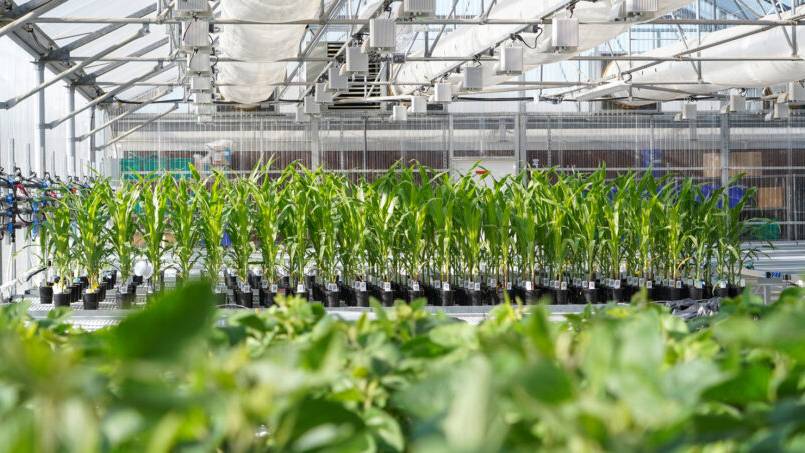Market Mixture
Impressive economic growth in Asia for the fourth consecutive year and favorable weather conditions in most world regions provided the basis for strong agricultural markets in 2007. Market conditions for agricultural commodities have been exceptional since the first half of 2007, with global cereal demand booming, driven by the bioethanol and meat sectors. The lowest stocks in two decades translate into high prices for wheat, corn, and rice; soybean and cotton stocks decline and prices rise as production is displaced by cereals.
Since the prices of their crops weigh heavily in farmers’ decisions regarding fertilizer usage, global consumption is expected to remain at a high level for the foreseeable future.
Rosy Outlook For Commodities
Given the continued political pressure for biofuel production and changing dietary preferences, the outlook is likely to remain rosy for agricultural commodities. Meat production, which requires significant inputs of cereals for feed, is increasing as a result of higher incomes, especially in China and India. IFA’s review of global fertilizer use by crop revealed that oft-cited figures overstate the share of cereals and overlook the importance of fruit and vegetable production as a key driver of fertilizer demand today.
Against this backdrop, 2007 was a record production year for most nutrients as buoyant demand stretched the industry’s ability to provide adequate supply.
Nitrogen In Balance
The nitrogen supply and demand were in balance in 2007. Most producers were operating close to capacity, and production outages in exporting countries and new capacity delays increased the tightness of ammonia and urea supplies. The nitrogen surplus is expected to expand by one-third in 2008, but may drop to less than 1.5% if demand remains firm and if currently idled plants are not re-commissioned.
Phosphate Production Grows
With regard to phosphate, rock production rose and its trade expanded after two years of decline. The supply of phosphoric acid was tight due to strong domestic demand in producing countries, but trade was static. Capacity declined in 2007, but will more than rebound in 2008. However, since demand will keep pace, the balance will remain tight.
The production of processed phosphates grew, but capacity barely expanded, and the costs of inputs such as ammonia and sulfur continued to climb. Increased trade in monoammonium phosphate more than compensated for a decline in diammonium phosphate trade.
Potash In Demand
Stronger-than-anticipated demand for potash in 2007 stretched producers’ ability to supply a widening base of customers. Indeed, a rapid decline of the prevailing surplus has been witnessed since 2006. Important capacity additions were completed in 2007, mostly in Canada and China, and should be fully operational by the end of 2008. Furthermore, non-readily available capacity in Canada will also be operational by the end of 2008.
Sulfur Strong
Robust demand and lower-than-anticipated production during the past year kept the sulfur market strong. With logistical constraints on trade, this drove prices to their highest point in two decades. A net supply deficit caused producers to resort to stock withdrawals. The market is forecast to come into relative balance in 2008 and move towards a significant surplus in 2009.
Impressive economic growth in Asia for the fourth consecutive year and favorable weather conditions in most world regions provided the basis for strong agricultural markets in 2007. Market conditions for agricultural commodities have been exceptional since the first half of 2007, with global cereal demand booming, driven by the bioethanol and meat sectors. The lowest stocks in two decades translate into high prices for wheat, corn, and rice; soybean and cotton stocks decline and prices rise as production is displaced by cereals.
Since the prices of their crops weigh heavily in farmers’ decisions regarding fertilizer usage, global consumption is expected to remain at a high level for the foreseeable future.
Rosy Outlook For Commodities
Given the continued political pressure for biofuel production and changing dietary preferences, the outlook is likely to remain rosy for agricultural commodities. Meat production, which requires significant inputs of cereals for feed, is increasing as a result of higher incomes, especially in China and India. IFA’s review of global fertilizer use by crop revealed that oft-cited figures overstate the share of cereals and overlook the importance of fruit and vegetable production as a key driver of fertilizer demand today.
Against this backdrop, 2007 was a record production year for most nutrients as buoyant demand stretched the industry’s ability to provide adequate supply.
Nitrogen In Balance
The nitrogen supply and demand were in balance in 2007. Most producers were operating close to capacity, and production outages in exporting countries and new capacity delays increased the tightness of ammonia and urea supplies. The nitrogen surplus is expected to expand by one-third in 2008, but may drop to less than 1.5% if demand remains firm and if currently idled plants are not re-commissioned.
Phosphate Production Grows
With regard to phosphate, rock production rose and its trade expanded after two years of decline. The supply of phosphoric acid was tight due to strong domestic demand in producing countries, but trade was static. Capacity declined in 2007, but will more than rebound in 2008. However, since demand will keep pace, the balance will remain tight.
The production of processed phosphates grew, but capacity barely expanded, and the costs of inputs such as ammonia and sulfur continued to climb. Increased trade in monoammonium phosphate more than compensated for a decline in diammonium phosphate trade.
Potash In Demand
Stronger-than-anticipated demand for potash in 2007 stretched producers’ ability to supply a widening base of customers. Indeed, a rapid decline of the prevailing surplus has been witnessed since 2006. Important capacity additions were completed in 2007, mostly in Canada and China, and should be fully operational by the end of 2008. Furthermore, non-readily available capacity in Canada will also be operational by the end of 2008.
Sulfur Strong
Robust demand and lower-than-anticipated production during the past year kept the sulfur market strong. With logistical constraints on trade, this drove prices to their highest point in two decades. A net supply deficit caused producers to resort to stock withdrawals. The market is forecast to come into relative balance in 2008 and move towards a significant surplus in 2009.
This article is based on reports presented by Michel Prud’homme and Patrick Heffer, available on IFA’s Web site, www.fertilizer.org.





